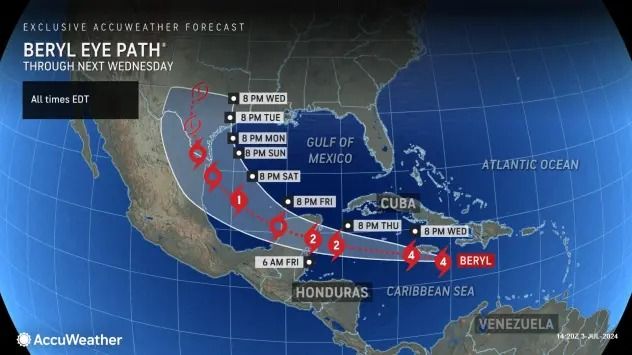Hurricane Beryl, which left a trail of destruction in the Caribbean, now heads to Jamaica as a strong Category 4 storm. It has been declared the strongest-ever hurricane in July.
On Monday, Beryl was declared a Category 5 hurricane — the highest rating on the Saffir-Simpson Hurricane Scale; winds had reached 157 miles per hour, according to National Oceanic and Atmospheric Administration (NOAA).
Beryl has shattered many records which experts believe are tied to climate change, as it has developed faster and much earlier in the year. It is the strongest hurricane on record for both June and July and saw the most rapid intensification of any hurricane before September 1 — typically the more intense period of the Atlantic season, which runs from June 1 to November 30. Experts believe global warming will cause hurricanes to intensify more rapidly due to warmer waters, giving people less time to brace for their impact, reports CNBC.
The NOAA has forecast an 85% chance of an “above-normal” 2024 hurricane season in the Atlantic – 17 to 25 named storms versus an average of 14, and eight to 13 hurricanes versus an average of seven. Four to seven of these are likely to develop into major hurricanes, compared with an average of three.
Beryl amassed its strength from warm waters of the Atlantic basin. Ocean temperatures in the Atlantic Basin are currently at record-warm levels and were closer in May to the usual level of late August, according to the NOAA.
Six people have so far been killed by the hurricane – three in Grenada and Carriacou, one in St. Vincent and the Grenadines, and two in northern Venezuela, as per the Associated Press.
Regions of South Texas are within the forecast cone for Hurricane Beryl’s potential arrival this weekend, posing risks of heavy rains, hazardous rip currents, and powerful winds, reports Fox Weather.
datasurfr.ai will continue to monitor the progress of Hurricane Beryl.






